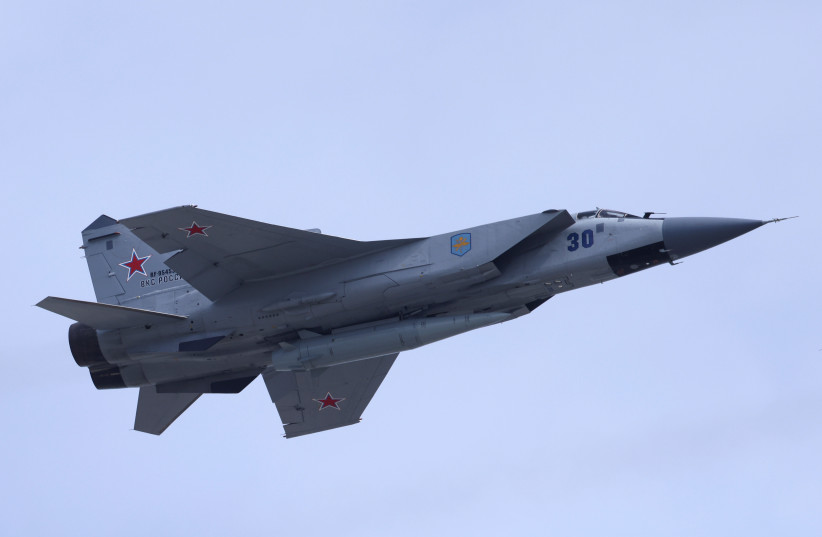Russia’s ‘hypersonic’ missiles rely on foreign parts, stocks depleted – report
The decreased intensity of the Russian missile attacks against Ukraine in July is the result of a dependency on foreign components for missile production, a representative of the Intelligence Directorate in the Ukrainian Defense Ministry told RBC Ukraine in an interview.
The representative, Vadym Skibitsky, explained that this is especially true for the production of the Kinzhal (“dagger” in Russian) missiles, which the Russians claim are hypersonic.
The Kinzhal is an air-launched ballistic missile capable of carrying nuclear or conventional warheads with a reported range of 1,500 to 2,000 km while carrying a payload of 480 kg. It may reach speeds of up to Mach 10 and is one of six “next generation” weapons unveiled by President Vladimir Putin in a speech in March 2018.
“The largest number of foreign components, on which Russia critically depends, [are found] in two products, the Iskander and the Kinzhal: about fifty components of the electronic base in these missiles are of foreign production,” said Skibitsky.
Russia changed tactics after sanctions showed effect
Ukraine is currently actively working with its allies to limit the supply of these components to Russia, to increase the pressure of the sanctions against them, and also to strengthen the Ukrainian air defense system, which is one of Ukraine’s key priorities at the moment, Skibitsky added.
 A Russian MiG-31 fighter jet equipped with a Kinzhal hypersonic missile flies over Red Square during a rehearsal for a flypast, part of a military parade marking the anniversary of the victory over Nazi Germany in World War Two, in central Moscow, Russia May 7, 2022. (credit: REUTERS/MAXIM SHEMETOV)
A Russian MiG-31 fighter jet equipped with a Kinzhal hypersonic missile flies over Red Square during a rehearsal for a flypast, part of a military parade marking the anniversary of the victory over Nazi Germany in World War Two, in central Moscow, Russia May 7, 2022. (credit: REUTERS/MAXIM SHEMETOV)He also explained that as a result of supply problems, the Russian army changed its tactics and began using different weapon systems and false targets to exhaust the Ukrainian air defense. Even though the frequency of attacks has not decreased, according to Skibitsky, the number of missiles in each attack is lower than before.
“The strikes will continue, despite the fact that [the Russians] have started, let’s say, to save on missile weapons. The autumn-winter campaign, when they used 80-100 rockets in one strike, exhausted the arsenals and reserves of Russia,” Skibitsky said.
He confirmed that during the war, Russia was able to increase the production of Kalibr and X-101 cruise missiles several times, from 10 to 30-40 per month. However, due to the depletion of missile reserves during the previous wave of missile attacks against Ukraine, the Russians are sending new products from the assembly line directly to the war.
“Currently, we record that the products produced immediately go to the troops for use, for example, the cruise missiles from the last strikes – we can already see their remains – were produced in April this year,” said Skibitsky.
Reuters contributed to this report.





Comments are closed.